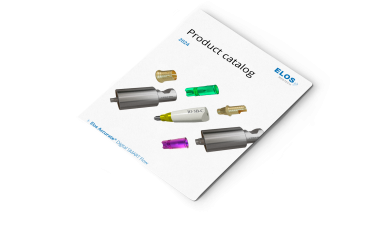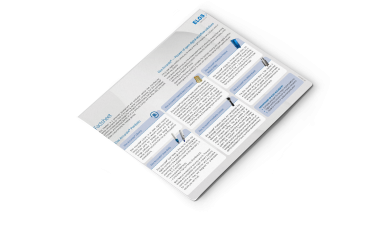Innovation in digital dentistry is progressing rapidly, with advanced technology becoming more accessible to dental clinics and labs. Intraoral scanners, 3D printers, and advanced CAD/CAM software are transforming workflows across the industry.
However, it's a polarized landscape when it comes to adopting digital solutions. While some dental clinics and labs have implemented a fully digital workflow, others in the industry are hesitant to change and feel more comfortable continuing in familiar analog workflows.
The advantages of adopting a digital workflow include decreased chair time, improved accuracy and fewer remakes, faster turnaround time, and much greater efficiency for clinics, labs, and patients alike. The reality is that dental professionals who haven't started adapting to digital methods are finding it more challenging to compete with their peers, and this widening competitive gap will only continue to accelerate in the future. This article will look at how the many benefits of digital workflows are transforming the partnership between clinics and labs and improving patient outcomes.
“We've seen a lot of [analog] labs just close down…the demand in the UK sector is huge, which is why we digitize everything because our potential and workflow is vastly higher.”
Steven Campbell, Managing Director of Nexus Dental Laboratory and President at Dental Laboratories Association in the UK
Streamlined processes lead to increases in production and profit margins.
Dental clinics and labs that have transitioned to a digital workflow look back at analog methods and recall a slow, cumbersome past. In fact, the output from digital workflows is typically many times that of analog production, which in turn can multiply revenue potential.
A patient in the provisional phase may have to visit a clinic repeatedly over several months for adjustments to the temporary restoration since many changes have to be made at an external facility. Add to that the time it takes if it needs to be mailed, and you get increased wait times, more required appointments, and either higher patient costs or less profit for clinics.
Digital workflows streamline the entire process and enable clinic owners to shorten their production time by utilizing their in-house equipment. Today clinics can make all the adjustments in-house on a 3D printer while the patient is in the clinic.
Once the patient is satisfied with the provisional, the clinic can send the digital file out for final milling and skip the lengthy adjustment process at an external facility. This saves milling costs and significantly shortens the number of patient visits, with the potential for higher profits.
The efficiency of the digital workflow also shortens chair time, requiring fewer tweaks and adjustments by the surgeon. Shorter chair times allow surgeons to see more patients with less wait time between appointments.
Steven Campbell, Managing Director of Nexus Dental Laboratory and President at Dental Laboratories Association in the UK, explains: “For us, a nice, simple digital workflow of the provisional trial in the patient looks like this: the files come in on an Elos scan flow, we design the model, produce a provisional, and work with our partners around the world for final milling in just one ‘go.’ Since we keep the original [provisional] file, when adjustments need to be made, we’re able to bring in the modifications and send it off for final milling without requiring multiple stages of back and forth. This means a very predictable and incredibly cost effective final outcome, and it’s also curing the surgeon’s problem of limited chair time. In the analog workflow, this took an incredible amount of manual technician time and back and forth.
Digital communication results in faster, more flexible workflows.
It's no secret that transferring information digitally is light years faster and easier than in the past. And yet, many labs and clinics are still casting impressions and stone models, then spending time and money sending them to labs to digitize them.
In the digital world, external partners can be pulled in on an as-needed basis, including both local and global experts. For example, a digital scan can be sent to a lab technician to review almost instantly—it doesn’t matter if they are located 10 km or 1,000 km away. The pool of expertise grows vastly when distance and speed of communication don’t restrict a clinic and lab from working together.
Lab technicians can receive scans from a surgeon and identify if there are any issues almost immediately. Then, scans can go back to the dentist almost instantaneously for correction. Finally, the corrected scan goes to the lab. It’s a streamlined process that results in drastically reduced downtime.
Finally, the lab can work with their own software or outsource to their CAD design partners. Once they get the designs back, they can choose to send the files to local or global milling and printing services.
Steven Campbell, Managing Director of Nexus Dental Laboratory and President at Dental Laboratories Association in the UK, explains, “In the old analogue world, it's at least 30 minutes to cast the model, then we've got to trim the model, dry the model out, scan and digitize it. So that five minutes [with digital] was probably realistically, an hour and 10 minutes [with analog]."
Properly implemented, digitalization improves accuracy and reduces remakes.
Dentists, clinical assistants, orthodontists, and lab technicians manage unique patient scenarios every day. The risk of human error coming into play depends on many factors, including skill sets, equipment, and communication.
It's a long and complicated journey in the analog workflow from when a patient enters the dental clinic for the first time until he leaves with the final prosthetic, which opens up the entire process to a greater risk of errors from human intervention.
Working with digital files makes for predictable and precise results because fewer steps are involved between the clinic and the lab. Less manual involvement means a reduced risk of human error. And since most of the information is captured upfront with the initial scan, only minor adjustments need to be made before the final restoration step.
But there’s a catch: end-users who use the analog tools and techniques but try to adapt them to the digital workflow will likely create more unpredictability, not less. Digital workflows need to be accurate and repeatable to be an improvement over analog methods—if they aren’t, the benefits of less remakes, higher profit potential, fewer patient visits and predictable patient outcomes can be lost.
End users need to know how to combine suitable tools and materials in the right way, and they need to be able to trust the various parts of the workflow that fit together to accomplish their desired outcomes.
It can be extremely beneficial for someone just starting the transition to digital to have a partner who can provide guidance on the right combinations. Herein lies yet another benefit that digital brings to the table, which is access to a huge community of people working across borders who can help answer some of the same questions and challenges a newcomer will inevitably have.
If clinics and labs get started off on the right foot, they can enjoy the benefits of digital dentistry right from the start instead of having to go through a lot of unnecessary trial and error. Steven Campbell explains, “We try to point newcomers to design partners who can help them, and eventually I've seen people who have started completely analog go completely digital within six months. We start by taking a baby steps to find out what's comfortable, connect them with partners who can help, and then watch as they grow their business—as they always do.”
Looking ahead to the longer-term ROI in digital dentistry
There is no doubt that the digital workflow is a vast improvement to the clinic/lab relationship, but going digital can seem overwhelming. Questions like “what’s the value proposition?”, “how much equipment do I need?” and “what will it cost me?” are all reasonable to ask.
The good news is that the move to digital can start small, with end-users getting comfortable with the technology and incrementally building out their digital workflow. It's not unusual to see a slow conversion from analog to digital. For example, end-users might start using an intra-oral scanner to create a digital impression, which saves time and shipping cost, and later they might integrate CAD/CAM software to design implant supported restorations.
Cost savings are remarkable. Not only do clinics and labs save staff hours due to increased efficiency, but they also save costs by avoiding sending jobs physically to external partners. For outsourced jobs, users can pick and choose partners based on their price and quality output. And since there is less rework in digital due to the improved quality, there’s more profit.
“Clinics and labs going digital will enjoy an output capacity of 5-6x that of analog processes: that's what you can do with a digital workflow. The way we work with provisionals digitally today removes the unpredictability we experienced in the old analog workflow. It’s just so incredibly efficient and cost effective that what you stand to gain is a huge potential for greater profits,” explains Steven Campbell.
At the end of the day, the overarching reality is that if dentists and labs aren’t working digitally, they won’t be able to keep up with their competition in the future.



